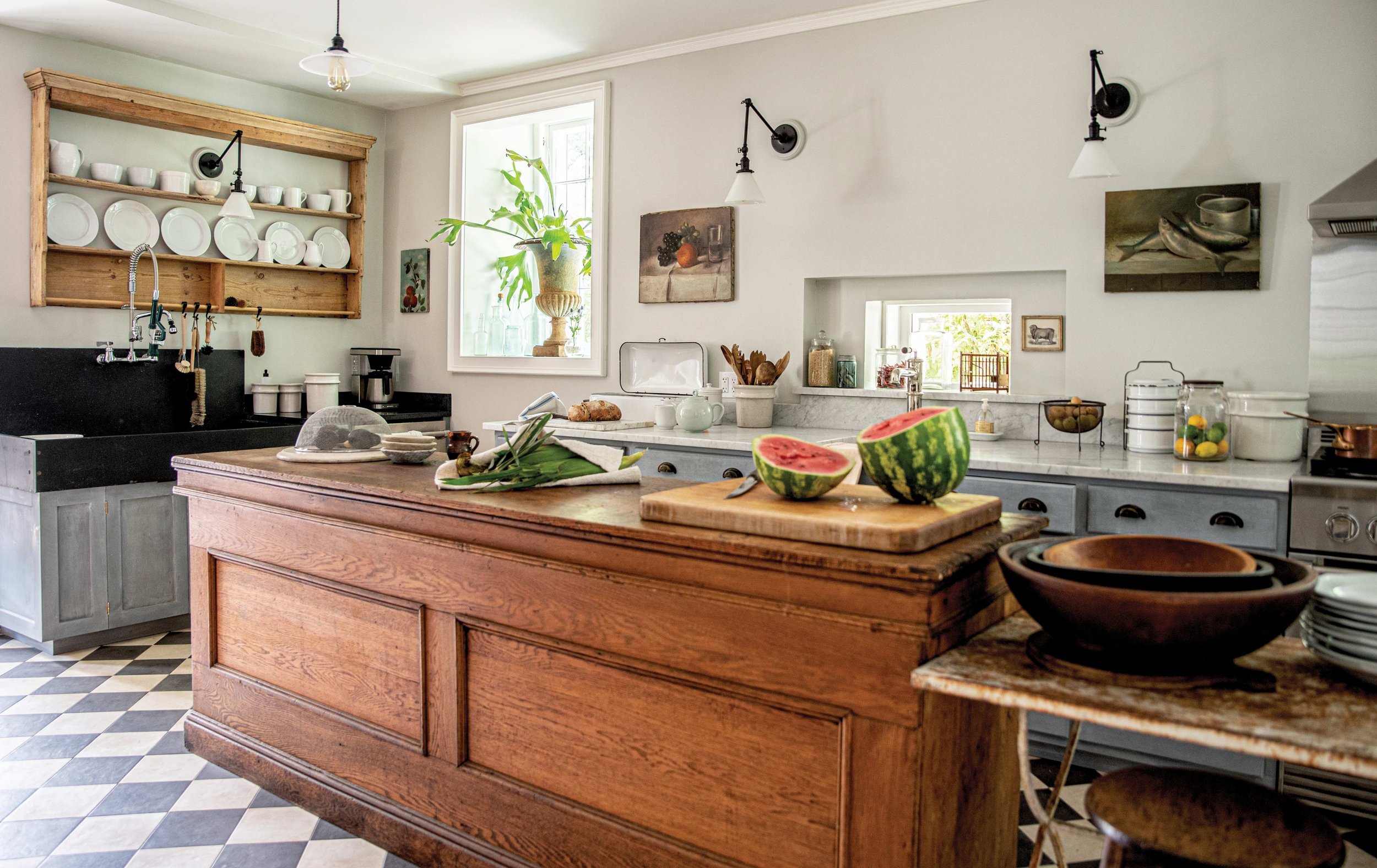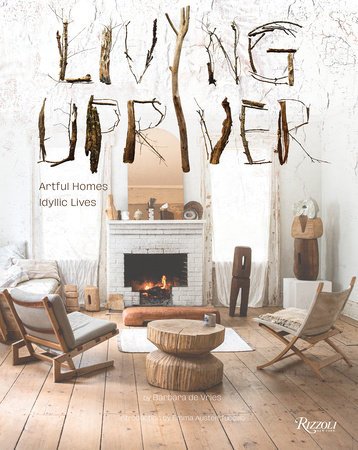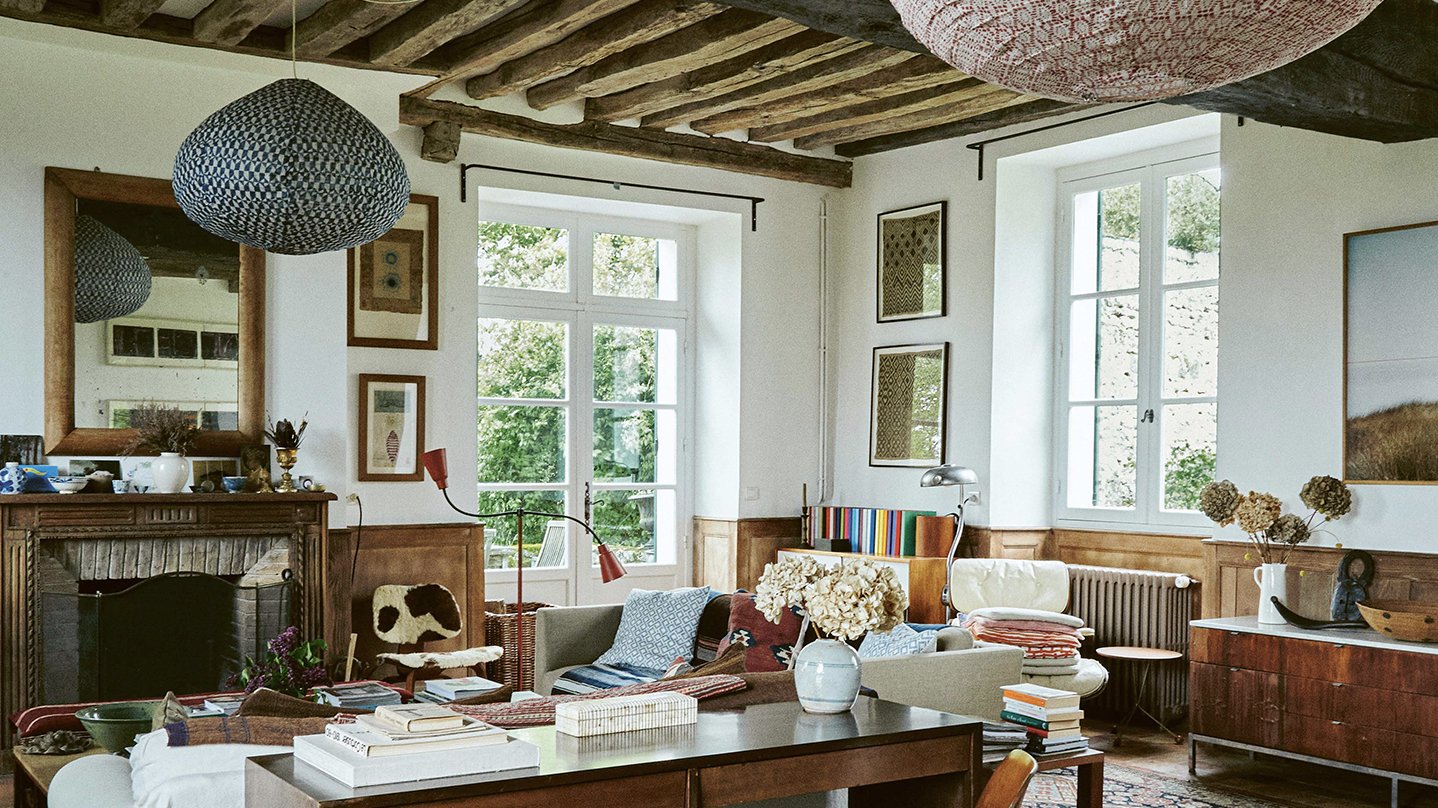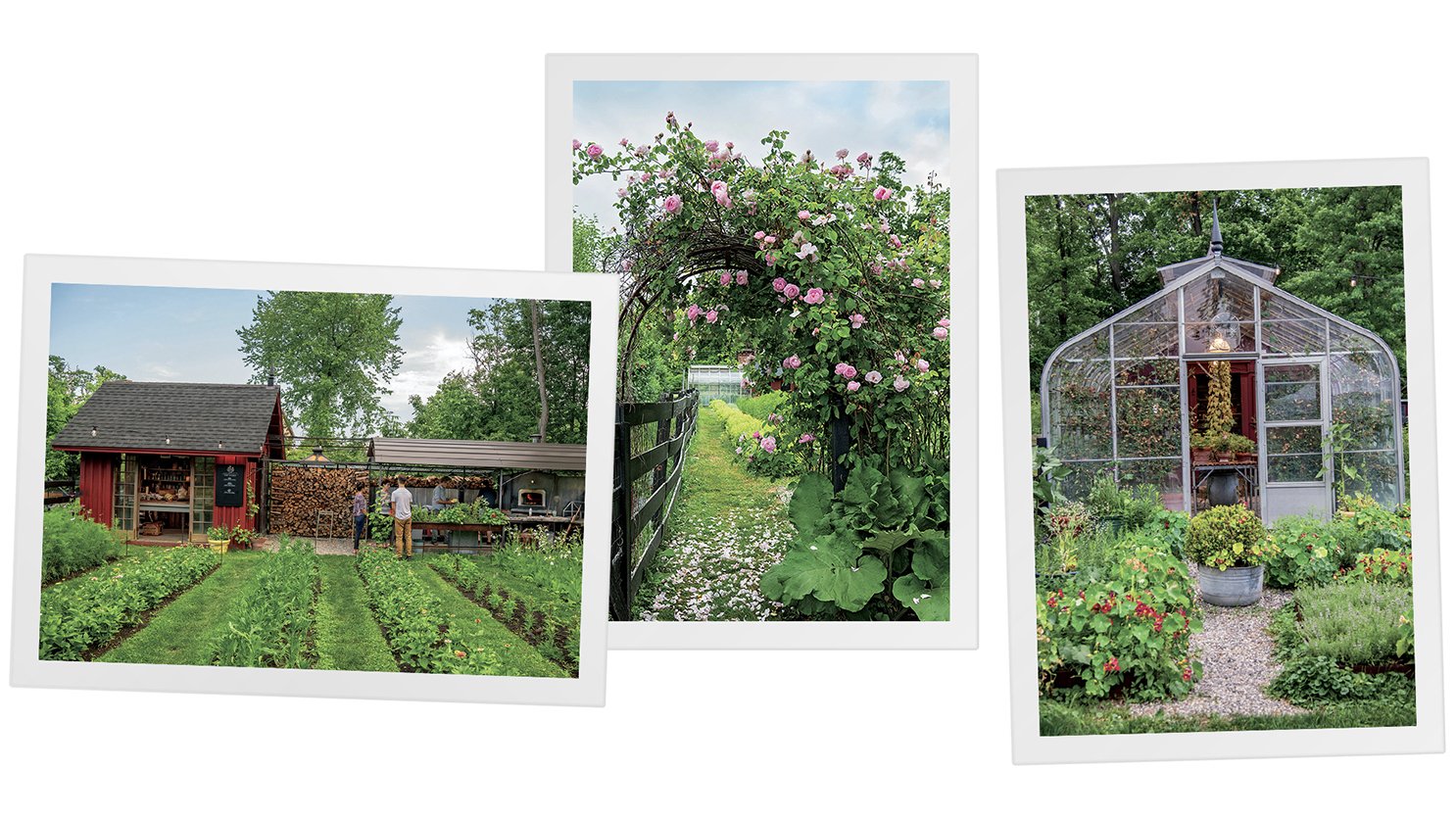Living Upriver: Homes That Inspire Creativity, Community, and Connection with Nature

Photography © Barbara de Vries for Living Upriver: Artful Homes, Idyllic Lives by Barbara de Vries © Rizzoli, 2023
Photography by Barbara de Vries
Our product recommendations include items from our sponsors and/or contain affiliate links, which means we may earn a commission when purchases are made. Rest assured, every item is genuinely chosen by our editorial team.
In her latest book, Living Upriver: Artful Homes, Idyllic Lives, author and environmental activist Barbara de Vries documents the countryside residences of modern creatives who have transitioned from urban living to embrace a simpler, more sustainable way of life. The following passage features the Stone Ridge, New York home of antiques dealer Ron Sharkey.
Photography © Barbara de Vries for Living Upriver: Artful Homes, Idyllic Lives by Barbara de Vries © Rizzoli, 2023
The White Barn and the Garden Shed are open on weekends throughout spring, summer, fall, and winter until the Christmas holidays. During the week, Ron opens it by appointment or if he happens to be around. Photography © Barbara de Vries for Living Upriver: Artful Homes, Idyllic Lives by Barbara de Vries © Rizzoli, 2023
“I was looking for farmhouse modern, but got Greek Revival,” says Ron Sharkey. After living in a small, secluded cottage in Accord, New York, for almost two decades, Ron started looking for a home near Rhinebeck or Kingston. He found one in Stone Ridge, one of his favorite towns. He also got more than he bargained for.
“When I bought it, I thought it was a kind of cupcakey little folly,” he says. “Now it’s almost four thousand square feet. I should have measured it.” But the house ticked a lot of Ron’s boxes. In addition to its location, it had two barns that were small enough to manage his antiques business by himself, and it had enough potential to unleash his passion for creating beautiful spaces.
The lower level of the ramshackle Greek Revival originally had a huge brick fireplace and a small kitchen, and the rest had been left as an unfinished basement. Upstairs, everything was painted peach. A fan of period English interiors, Ron liked the idea of creating an upstairs-downstairs feeling, with a utilitarian lower level and more formal floors above, like a traditional country manor house. “I call the small downstairs bedroom the ‘cook’s room,’ but of course, I have never had a cook,” he laughs. “Then it became the bedroom where I sleep most of the time.” He used the bluestone slab from a walkway to the street to create the floor in the fireplace room. He raised the floor of what became the dining room, using leftover boards that he found in the porch attic. And he created a black-and-white “Vermeer floor” in the kitchen, using closeout tiles.
Ron’s transition to living in the countryside was gradual. In the mid-eighties, he worked at an alternative high school in New York City as an art and English as a Second Language (ESL) teacher. “It was a great program for immigrant kids who didn’t speak English yet,” he says. Around the same time, he started spending vacations with friends in Cape Cod. “During the time that AIDS was claiming a lot of lives, Provincetown became a very supportive community,” Ron says. He considered buying a home near Provincetown when another friend invited him to spend the weekends at his restored farm in Upstate New York. Initially, Ron was relieved to get back to the city on Sunday evenings but, eventually, he began looking for a place of his own. “It made more sense to buy Upstate, two hours outside New York City, than on the Cape,” he says.
Ron found the cottage in Accord in 1995 and, in 2005, he opened his first antique store. As the business became sustainable, he bought an old barn in the center of nearby High Falls, painted it black, and named it the Black Barn. It became a popular destination for a new generation of weekenders and full-time residents, not least because of recurring Field and Barn fairs he held on the front lawn. Ron’s collaboration with interior designer Brad Ford has evolved into the now widely successful biannual Field + Supply Makers Market in Kingston, New York.
The Stone Ridge house is a testament to Ron’s evolution in design, like an expression of something he’s been dreaming about for a long time. Each space has its own identity, yet it feels like the same family has roamed the house for a century. When I ask Ron about his enormous collection of World of Interiors magazine, he tells me he first subscribed when he got the Accord cottage. “Sometimes I couldn’t even open them. They were just so beautiful!” he says. He kept them all when he moved, bundled them up by year, and left them in the hallway waiting for built-in bookshelves or even their own library. Instead, the temporary stacks have become more like an art installation—an homage to inspiration. When Ron’s Accord cottage was featured in World of Interiors in 2014, Ron was both stunned and thrilled. “I am eternally grateful to photographer Don Freeman for making that dream come true,” he says.
From an early age, Ron collected paraphernalia from thrift stores. Following visits to Provincetown, he’d store his finds in his small apartment on Sixteenth Street in Manhattan. “I’d keep it in my closets and under my bed, hoping that one day I could flip it.” The time came when, in the mid-eighties, he took a stall at the famous Chelsea Flea market in Manhattan.
Today, as a collector and reseller, Ron sees possibility in damaged vintage furniture if it has a workable resale value once it’s been restored. He knows a piece’s value from decades of experience, but still looks for markings that indicate its origins. Telltale signs are often in the condition of the wood underneath or inside, the quality and age of the nails and screws, and the presence of dovetail joints. Then he decides whether the damaged piece is worth the effort and cost to restore it into an attractive sellable piece.
Ron suggests following your instinct when buying vintage pieces and keeping the space you’re furnishing in mind. If you’re thinking of restoring to retail, start small by finding things at thrift stores, yard sales, and auctions, and selling them to friends, online, or at markets.
Ron opened his first store in 2005 and has continued to grow his business ever since. To keep his inventory exciting and relatively affordable—even at a time when colleagues say the good stuff is disappearing—Ron relies on various sources, including friends and individuals who go to him first. “I also scour estate sales, auctions, barn sales and yard sales, other antique shops and cooperatives, small and large flea markets, and even Facebook Marketplace,” he says.
As many new, creative young people move to the area full-time his customer base has changed to include hotels like Audrey’s Farmhouse, in Wallkill; Inness, in nearby Accord; and Hasbrouck House, on Stone Ridge’s Main Street. And decorators and other talented individuals rely on Ron’s curated inventory to help furnish their rooms. “They’re all very lovely and have great taste, which keeps me on my toes,” he says.
Photography © Barbara de Vries for Living Upriver: Artful Homes, Idyllic Lives by Barbara de Vries © Rizzoli, 2023
Photography © Barbara de Vries for Living Upriver: Artful Homes, Idyllic Lives by Barbara de Vries © Rizzoli, 2023
Photography © Barbara de Vries for Living Upriver: Artful Homes, Idyllic Lives by Barbara de Vries © Rizzoli, 2023
Photography © Barbara de Vries for Living Upriver: Artful Homes, Idyllic Lives by Barbara de Vries © Rizzoli, 2023














